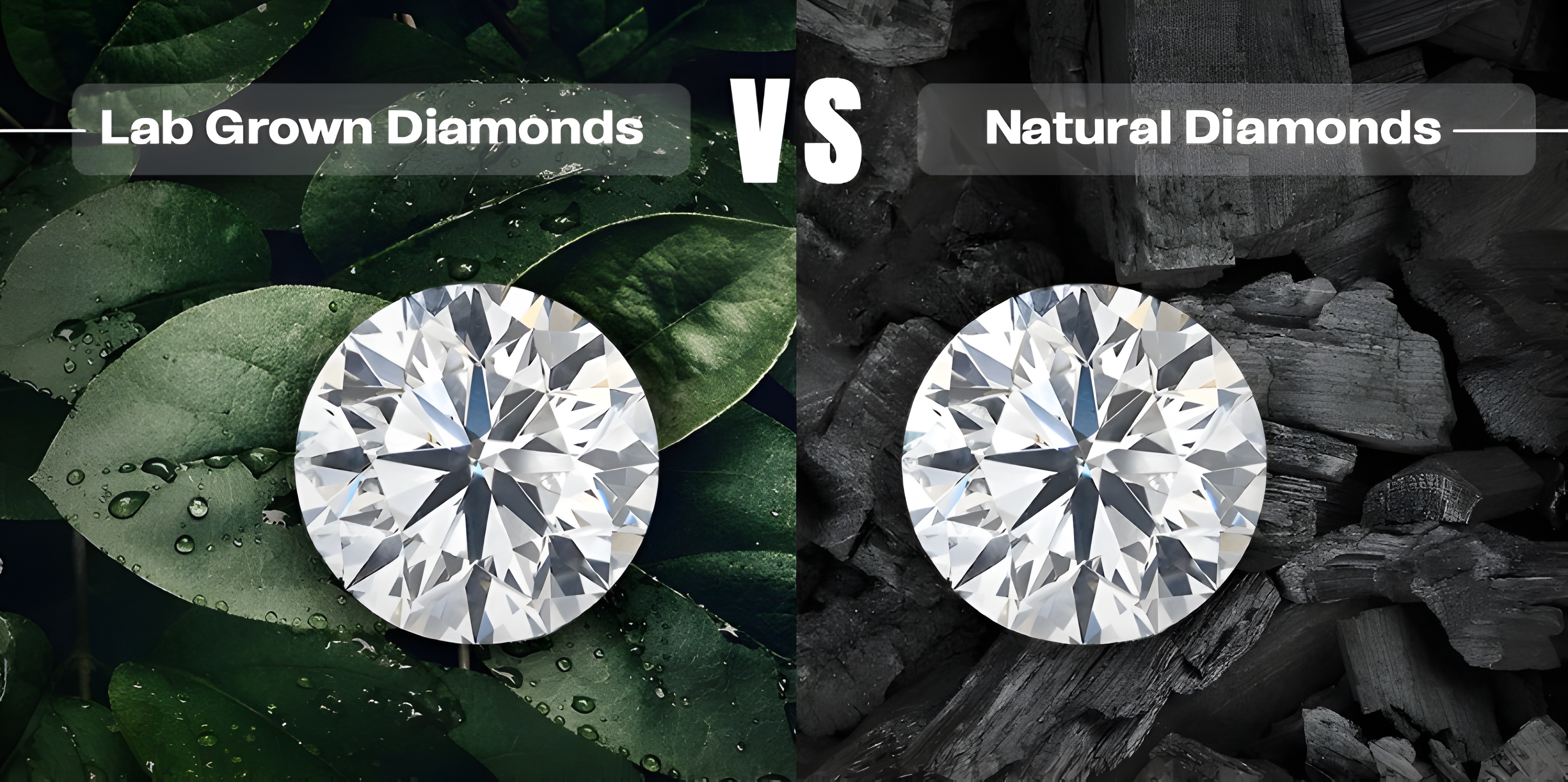Difference Between Lab Grown Diamond Vs Natural Diamond
| Point | Natural Diamond | Lab Grown Diamond |
|---|---|---|
| Meaning | Formed naturally over millions of years under high pressure and temperature conditions deep within the Earth's mantle. | Also known as synthetic diamonds, these are created in a laboratory environment using technological processes that mimic the natural diamond formation. |
| Source | Mined from beneath the Earth's surface through mining operations. | Produced in controlled laboratory settings using advanced technological processes. |
| Making Process | Forms naturally through geological processes involving intense pressure and heat acting on carbon over millions of years. | Created through either High Pressure High Temperature (HPHT) or Chemical Vapor Deposition (CVD) methods. |
| Hardness | Renowned for its hardness, making it the hardest natural substance known, rated 10 on the Mohs scale. | Possesses the same physical and chemical properties as natural diamonds, including exceptional hardness, rated 10 on the Mohs scale. |
| Appearance | Features unique inclusions and characteristics due to natural formation processes, often valued for its rarity and individuality. | Physically and optically identical to natural diamonds, with the same brilliance, clarity, and sparkle. |
| Eco-Friendly | Mining can have significant environmental impacts, including habitat destruction and soil erosion. | Generally considered more environmentally friendly as they require less energy and do not involve mining operations. |
| Certification | Certified by reputable gemological institutes verifying its authenticity, quality, and characteristics. | Certified by gemological laboratories that specialize in grading synthetic diamonds. |
| Price | Generally commands a higher price due to its rarity and traditional market demand. | Typically more affordable than natural diamonds due to lower production costs and availability. |
| Conclusion | Natural diamonds, while not eco-friendly due to mining, remain highly valued for their rarity, natural beauty, and cultural significance. They are a timeless and luxurious choice for engagement rings and fine jewelry, symbolizing enduring love and prestige. | Lab grown diamonds offer an eco-friendly alternative to natural diamonds with identical appearance and hardness (rated 10 on the Mohs scale). They are produced sustainably in controlled environments and typically cost 40-50% less, making them a practical choice for diamond jewelry. |
Are Lab Created Diamonds Real?
Lab created diamonds are undeniably real diamonds, possessing the same chemical composition, physical properties, and optical characteristics as natural diamonds. Contrary to misconceptions, lab grown diamonds are not synthetic imitations but are instead genuine diamonds grown in a controlled laboratory environment.
The Gemological Institute of America (GIA) officially recognizes lab grown diamonds as real diamonds. They exhibit identical brilliance, scintillation, and fire as natural diamonds because they are formed using the same crystal structure and elemental composition. Lab grown diamonds are grown from a tiny diamond seed or crystal, where carbon atoms are subjected to high pressure and temperature, typically between 1500 to 3000 degrees Celsius.
Key Properties Comparison :
| Properties | Lab Grown | Mined |
|---|---|---|
| Conflict-Free | Yes | No |
| Hardness (MOHS) | 10 | 10 |
| SP3 Carbon Bonds | 100% | 100% |
| Price | $$$ | $$$$$ |
| Resale Value | $$ | $$$$ |
Lab grown diamonds are often referred to as "eco-friendly diamonds" because they do not require mining, which can have significant environmental impacts. The controlled environment ensures that lab diamonds are produced with minimal carbon footprint compared to mined diamonds.
In terms of pricing, lab grown diamonds generally cost less than mined diamonds due to reduced production costs and ethical sourcing. This affordability allows consumers to invest in high-quality diamonds at a lower price point while retaining the intrinsic value and brilliance synonymous with natural diamonds.

